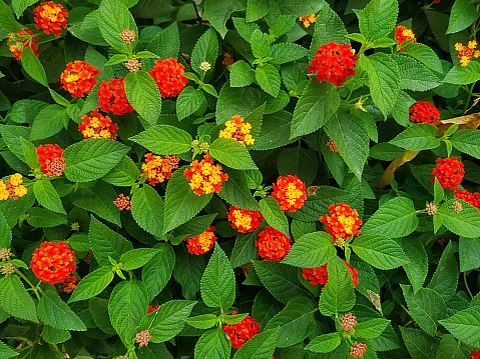
- Home
- न्यूजग्राम
- India
- World
- Politics
- Entertainment
- Culture
- Lifestyle
- Economy
- Sports
- Sp. Coverage
- Misc.
- NewsGram Exclusive
- Jobs / Internships

The alien invasive species of Lantana Camara, a weed, will find a conducive atmosphere that will help in its further infestation in the future under the climate change scenario, that too at the cost of native species.
With calculations for present (2020) and future (2050), the study – with area pertaining to Jharkhand – was aimed to elucidate the potential risk zones prone to the invasion of the perennial ornamental plant, the Lantana Camara, known as Raimunia in Hindi.
"Results showed the presence of L. Camara invasion in more than 13 per cent of the geographical area of Jharkhand, Chotanagpur plateau, which may expand up to 20-26 per cent by 2050 depending upon emission scenarios as characterised by the four different temperature rise scenarios in future," the study 'Modelling the potential risk zone of Lantana camara invasion and response to climate change in eastern India' said.
Lantana Camara of the Verbenaceae family has more than 600 varieties and is a native terrestrial weed of South and Central American origin, which is considered among the top 10 worst invasive species by IUCN. It severely affects the native composition of terrestrial ecosystems. It was introduced in India in 1809 and later invaded most of the disturbed forest, pasture, and fallow landscapes.
The research showed that the Lantana Camara distribution has adversely impacted the population stratification, regeneration, and anticipated future composition of tree communities in tropical dry deciduous forests of India and how this species, due to its wide eco-tolerance has dominated varied landscapes including disturbed areas, along streams, open and disturbed forests, and riparian vegetation.
The study also considered the previously researched facts that Lantana occupies a wide category of habitats and varied soil types and disperses mostly through frugivorous birds, anthropogenic factors, and forest fire. "Due to its high regeneration potential and perennial reproduction, L. Camara rapidly invades habitats. Allelochemical ingredients of L. Camara adversely affect plant richness," the researchers said.
Published recently in 'Ecological Processes', the study could establish not just its present availability in all zones, but also that the future projection (2050) indicates a possible expansion of its distribution range across all agro-climatic sub-zones with dominance in two sub-zones.
"Importantly, the temperature seasonality was observed as the most contributing factor for the distribution of L. Camara for current and future scenarios across all possible climate scenarios depending on temperature rise. Suitable habitat for L. Camara mostly occurred under natural vegetation (66.05 -per cent of critical risk zones (CRZ) and 60.71 per cent of high-risk zones (HRZ)) and agriculture landscape (29.51 per cent of CRZ and 34.48 per cent of HRZ).
The investigation also showed inability of L.Camara to penetrate through the intact native virgin forests, in contrast to its abundant distribution along agricultural land and in open and disturbed forest areas including wide distribution in Betla National Park.
"The presence of L. Camara in forest areas poses a great threat to native forest species and wildlife habitat in Chotanagpur plateau region as it restricts the regeneration and extension of natives. Another major finding of the study suggests urgent interventions to curtail its further expansion to support a better environment for the tigers in Betla National Park as well as reverse the ecosystem imbalance due to rapid invasion and removal of native species," the multi-author study said.
The researchers comprised Sharad Tiwari, S N Mishra, Basant Kumar, S N Vaidya, Brojo Gopal Ghosh, Sk Mujibar Rahaman, Masjuda Khatun and Sanjoy Garai from Institute of Forest Productivity, Lalgutwa, Ranchi; Dharmendra Kumar from Department of IT, government of Jharkhand and Amit Kumar from the Department of Geoinformatics, Central University of Jharkhand.
"We recommend prioritisation of sensitive natural sites at the verge of greater invasion threat and adoption of native tree and grass-based intervention models to address invasion issues; support richer biodiversity and environmental amelioration and outreach programs to educate people with the harmful effects of L. camara and other similar invasive species," the researchers' team said. (IANS/JS)
Keywords: Lantana Camara, Verbenaceae family, invasive species, perennial ornamental plant.
